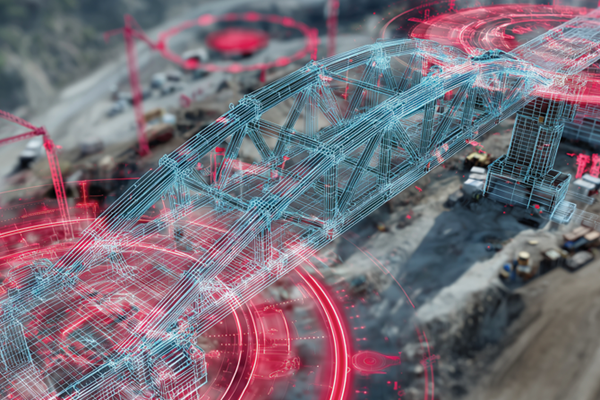Ensuring Building Safety and Compliance

Forensic engineering in the civil infrastructure discipline is a specialized field focused on investigating structural failures and determining their root causes. This discipline plays a crucial role in ensuring the safety and reliability of buildings and other structures. By identifying the reasons behind failures, forensic engineers can recommend actions to prevent similar incidents in the future, thereby safeguarding public safety and property. The process involves a thorough examination of the structure's condition, assessing the degree of damage, and appraising the stability of the building.
Advancements in Forensic Engineering Tools
The advancement of technology has significantly enhanced forensic analysis in this field. Tools such as Finite Element Method (FEM) analyze the entire structural behavior, while elemental analysis tools focus on individual components like beams, columns, and foundations. Simple tools like Spreadsheets also streamline the analysis process. The primary deliverable in forensic engineering is a technical report encompassing all relevant facts, data, evidence, and professional opinions.
The Role and Process of Forensic Engineering in Building Safety
Forensic engineering is crucial for examining defects and their causes in buildings and structures. Common defects include fire damage, water damage, concrete cracks, and vehicle impacts, all of which can compromise structural integrity and safety. Detailed investigations are necessary to identify underlying problems. Forensic engineering also meets statutory requirements, such as those in Singapore's Building Control Act, which mandates inspections and corrective actions for dangerous buildings. Unauthorized structures lacking proper design and certification pose significant risks and require forensic engineering to ensure compliance with safety standards.
Steps in the Forensic Engineering Process
The forensic engineering process involves confirming the assignment, preparing for the inspection, performing the site inspection, and analyzing collected evidence. It begins with understanding the site and obtaining entry permission. Preparation includes reviewing incident information, understanding the building's history, and conducting preliminary analysis. Site inspection involves collecting evidence through photographs and videos for comprehensive documentation. Analysis interprets the evidence to determine the cause of failure and extent of damage.
This process is distinct from design and construction, focusing on investigating existing conditions rather than creating new structures. It requires specialized knowledge, desktop analysis tools, precise inspection apparatus, and a coordinated team.
Challenges include urgent cases, ensuring safety during inspections, and coordinating with multiple parties. Preparation is crucial for understanding the incident and predicting potential damage, while site inspection is vital for collecting accurate evidence. Final analysis reinforces findings and provides a detailed report on the cause and impact of the failure.
The Technical Report
The technical report starts with a detailed presentation of facts, including background information, incident details, location, weather conditions, soil or structural data, and maintenance or testing records. This section must remain purely descriptive. The report then presents professional opinions, which should be objective, evidence-based, and testable, to justify conclusions drawn from the evidence and discuss its relevance to the task.
Forensic Engineering Strategy
A systematic approach to forensic engineering uses the scientific method for analysis and technical reporting. This process includes setting objectives, making on-site observations, formulating hypotheses, conducting tests, and recording data.
The evidence-observation relationship is essential for accurate conclusions. For example, in a case involving the collapse of a liquefied petroleum gas tank due to strong wind, the analysis would examine the tank's design, construction methodology, and the wind's impact on the incomplete structure. Computational models assess the tank's stability and verify the shell structure's performance under design loads.
Enhancing Structural Integrity Through Forensic Engineering
Forensic engineering is crucial for ensuring the safety and reliability of civil infrastructure by investigating structural failures and identifying root causes. This discipline prevents future incidents and maintains building integrity through a systematic process of assignment confirmation and evidence analysis.
It addresses defects and statutory requirements while safeguarding public safety. As structures age, the role of forensic engineering in maintaining stability and safety becomes increasingly important. By utilizing advanced tools and a systematic approach, forensic engineers deliver technical reports that inform better design and construction practices.
The collapse of the liquefied petroleum gas tank highlights the need to consider temporary construction phases and environmental factors. Ultimately, forensic engineering enhances structural integrity and prevents future failures.
Partner with Envista Forensics for Civil and Structural Failure Investigations
At Envista Forensics, our engineers specialize in investigating civil and structural failures to uncover root causes and provide evidence-based insights. From building collapses and material defects to fire or environmental impacts, our team delivers clear, defensible findings that support insurers, legal teams, and property owners.
With advanced tools, proven methodologies, and decades of experience, we help clients not only resolve complex claims but also prevent future incidents by identifying vulnerabilities before they escalate.
Contact Envista Forensics today to learn how our civil infrastructure experts can safeguard your projects, reduce risks, and enhance public safety.
Our experts are ready to help.




